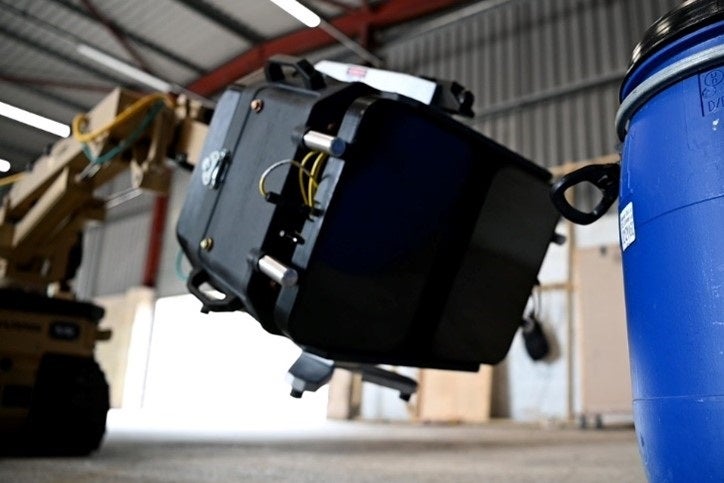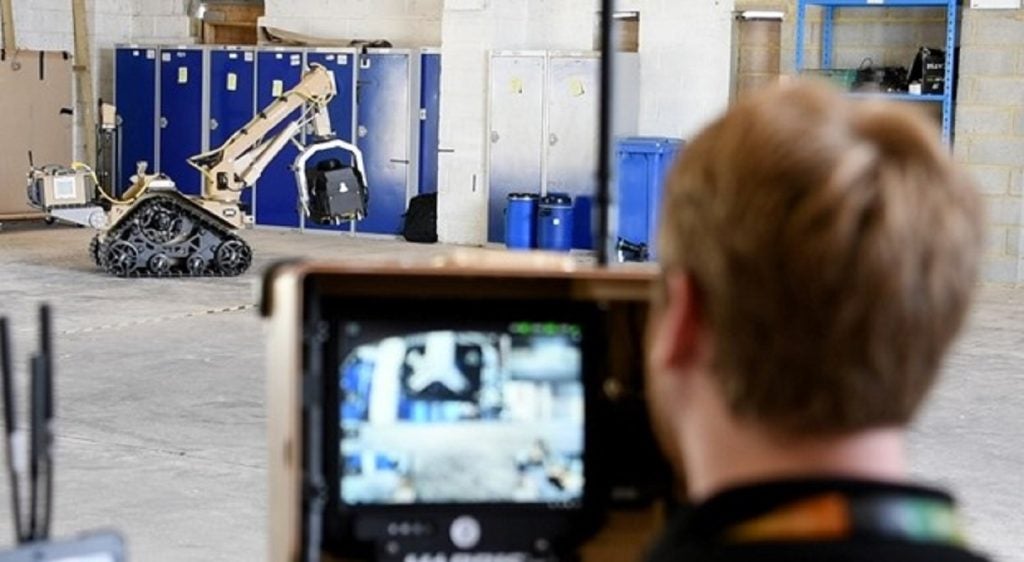The UK Defence Science and Technology Laboratory (Dstl) has been attempting to de-risk detection when scouring for hidden weapons and explosives.
Recently, the defence agency has run field trials on a Rapiscan American Science and Engineering produced prototype that uses X-Ray Backscatter imaging technology mounted on an L3Harris T7 remote-controlled robot.
Operators will be able to scan large areas more quickly leading to increased situational awareness, which gives troops an operational advantage.
“[The] X-ray Backscatter is an established technology, but what we are trying to do is apply it to explosive ordnance disposal [EOD] – this approach is novel,” explained Trial manager Elaine.
“Being able to robotically mount the X-Ray Backscatter provides additional situational awareness, potentially to see if there is a threat item without having to go anywhere near it. It feels amazing to be involved in a project that could go on to save lives.”
The prototype imager head is mounted onto the robot arm while users operate it via a haptic controller. Combining the X-ray Backscatter system with the EOD robot has allowed demonstration of remote deployment of the capability across multiple terrains.
The Backscatter technology forms the image by sweeping a small ‘pencil beam’ of X-rays across the target and detecting those reflected back using detectors mounted on the front of the imager.

The project is a collaboration with the US Government and two prototypes have been created so far.
After the successful field tests the project team will be using the feedback to assess what modifications would be needed to turn this prototype into a military asset that could be used on the battlefield.
The technology would be a highly prized piece of kit in Ukraine, where Russian forces have expanded their minefields in the south of the country – the main focus of the counteroffensive in the Zaporizhzhia region, pushing toward Crimea – following the start of the counteroffensive in June.
Recently, Lithuania’s Minister of National Defence, Arvydas Anušauskas, announced that his country will provide additional military assistance to Ukraine, including detonation systems, while pushing for more money and material from the international community in support of the Lithuania-led Demining Coalition.
So far, the British Army has supplied British Vallon mine detectors to Ukraine as well as critical mine disposal skills to troops, teaching them how to adapt the equipment they have available on the front line.









